What Makes 18/10 Stainless Steel the Best Quality for Flatware?
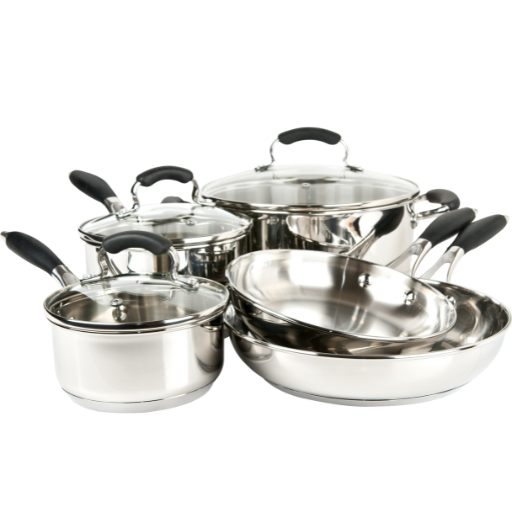
Understanding the Stainless Steel Grade System
Stainless steel grade system assembles stainless steels into various categories according to their compositions and physical properties that denote their suitability for different applications. In this piece, we are providing a brief overview to address questions about stainless steel grades and technical parameters:
- Austenitic Grades (e.g., 304, 316):
- Composition: Contains high levels of chromium (18-20% for 304; 16-18% for 316) and nickel (8-10.5% for 304; 10-14% for 316).
- Properties: Excellent resistance to corrosion, good formability, and not magnetic.
- Use: Flatware, cookware, general kitchen applications because they are strong and do not rust.
- Ferritic Grades (e.g., 430):
- Composition: Mostly made up of about sixteen-eighteen percent chrome with low or no nickel content.
- Properties: Moderate resistance to corrosion, magnetism facilitates use in affordable due to the fact that it has less nickel content.
- Use: Frequently used for budget kitchen utensils and decorative purposes.
- Martensitic Grades (e.g., 410, 420):
- Composition: Comprising carbon between .2-.12%, chromium ranging from approximately eleven and a half percent up to eighteen %.
- Properties: Moderate in terms of corrosion resistance but possessing hardness that is nice enough with capability of being heat treated thereby raising its strength.
- Use: These are common materials in cutlery manufacturing industry surgical tools among others.
- Duplex Grades (e.g., 2205):
- Composition: Mixture of austenitic with ferritic almost in equal proportions having at least twenty-two % chrome and three-five %nickel.
- Properties: High strength , excellent stress –corrosion cracking resistance , easy weldability.
- Use: More specific industrial applications rather than kitchen appliances.
- Precipitation-Hardening Grades (e.g., 17-4 PH):
- Composition: Seventeen percent chromium, four percent nickel and includes other elements like copper or niobium.
- Properties: Strong, very good corrosion resistance and by heating treatment acquire high toughness.
- Use: Typically applied in aerospace industry ,chemical manufacture as well as high performance components.
Comparing Corrosion Resistance in Different Grades of Stainless Steel
When assessing corrosion resistance of different stainless steel grades, it is important to consider the particular environments and applications that they will be used for. Austenitic grades like 304 and 316 have a high content of chromium and nickel which makes them more resistant to corrosion. In this regard, grade 316 contains molybdenum which renders it highly resistant to pitting and crevice corrosion in chloride environments hence making it suitable for marine applications as well as chemical processing.
On the other hand, martensitic stainless steels including 410 and 420 possess a moderate corrosion resistance which is adequate for less hostile conditions. This therefore implies that their greatest advantage is their hardness and ability to be hardened by heat treatment thus they can be used in cutlery or tools requiring strength and modest corrosion resistance.
Similarly, duplex alloy type such as S31803 has excellent stress corrosion cracking resistance as well as good general corrosion and localized attack resistances. Thereby duplex stainless steels are demanded in industries like petrochemicals or chemical processing where chlorides, etc create corrosive environment.
In summary, the difference between various grades of stainless steel with respect to their resistance against corrosive elements depends on the composition of these alloys as well as conditions surrounding its use. Generally speaking, austenitic ones have better overall corrosion properties followed by duplexes then martensites having specialized mechanical attributes like strength/ hardness among others.
Chromium and Nickel: The Secrets Behind 18/10 Stainless Steel’s Durability
The reason why 18/10 stainless steel is highly valued for its superb lastingness lies mainly in the well-balanced mixture of chromium and nickel. This number “18”stands for eighteen percent of chromium content that creates a passive layer of chromium oxide on the steel surface. The metal beneath remains unaffected even when subjected to hard conditions or gets scratches due to this film which is extremely resistant to corrosion and oxidation.
Whereas the ‘10’ shows ten percent of nickel content, besides, it advances the general structural strength and toughness of steel. Austenitic (nonmagnetic) structure in nickel offers great stability at room temperatures as well as high temperatures while vastly improving ductility and scaling resistance alongside thermal expansion properties of such metal. It therefore means that chromium’s interaction with nickel renders stainless steel not only unyielding in terms of strength but also capable of retaining an aesthetically pleasing look thus making it suitable for several applications ranging from medical devices to kitchen utensils.
Choosing the Perfect Stainless Steel Cookware for Your Kitchen
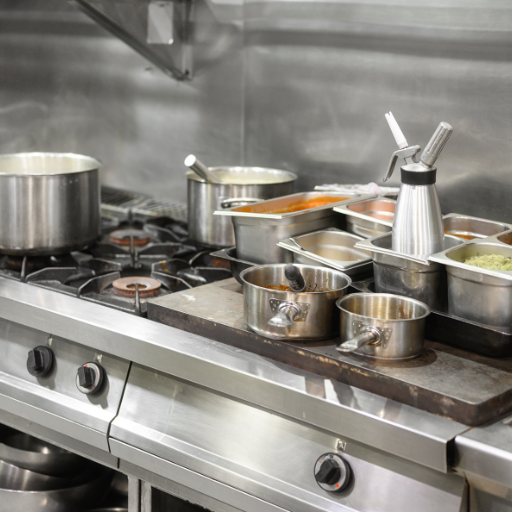
Why Stainless Steel Cookware is a Must-Have for Every Chef
Comparing Stainless Steel Pots and Pans with Other Materials
Among factors to consider when comparing stainless steel pots and pans with others are their durability, heat distribution, reactivity and maintenance.
- Durability:
- Stainless Steel: It does not corrode easily, it is stain resistant and rust-resistant. On top of this, it doesn’t get warped under high temperatures and as such the pot maintains its shine over a long time.
- Non-Stick: In case one is using an inappropriate utensil, the coating could easily be scratched off or wear out over time hence not lasting for long periods of usage.
- Cast Iron: However, if not properly seasoned and maintained, cast iron may rust so quickly. Furthermore, once dropped on the ground it can break because of its heaviness.
- Heat Distribution:
- Stainless Steel: Good heat distribution particularly when combined with multi-layered base (e.g. aluminum or copper core).
- Non-Stick: The non-stick provides good even heat distribution but not as much as multilayer stainless steel normally does.
- Cast Iron: This makes cast iron ideal for slow-cooking and frying since it holds and distributes heat evenly.
- Reactivity:
- Stainless Steel: Unreactive to foods that are acidic or alkaline in nature.
- Non-Stick: Although typically does not react to food unless overheated which causes toxic fumes.
- Cast Iron: If not properly seasoned then cast iron can react with acid foods imparting a metallic taste.
- Maintenance:
- Stainless Steel: Generally easy to clean with no scratches or dents; safe for dishwashers too.
- Non-Stick: Its coating should be handled gently during cleaning process; also rinsing in dishwasher might damage the material more especially if done regularly.
- Cast Iron: This means that one has to wash it frequently so as to preserve its stickiness while preventing any cases of corrosion from taking place. Meanwhile do not put into dishwasher safe therefore requires harder cleaning.
Technical Parameters:
- Stainless Steel:
- Composition: 18/10 alloy (18% chromium, 10% nickel)
- Thermal Conductivity: Moderate (better with multi-layer bases)
- Maximum Temperature: Can withstand high temperatures without warping
- Non-Stick:
- Coating: Polytetrafluoroethylene (PTFE) or ceramic
- Thermal Conductivity: Moderate
- Maximum Temperature: Usually up to 500°F (260°C) before coating degradation
- Cast Iron:
- Composition: Iron with a carbon content of 2-4%
- Thermal Conductivity: Low, but excellent heat retention
- Maximum Temperature: High, can withstand direct flames and oven temperatures
Diving into the grades of steel: What constitutes high-quality stainless steel flatware?
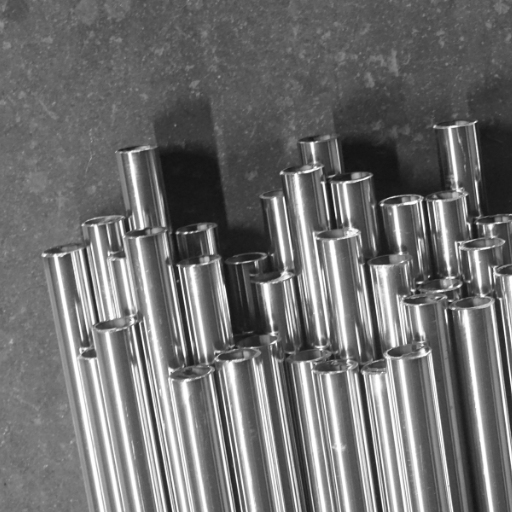
304 stainless steel vs. 18/10 stainless steel in flatware
Typically, these two types of stainless steel are used interchangeably because 18/10 stainless steel is actually a subset of 304 stainless steel. In short, below is an overview of their attributes:
- Element:
- 304 Stainless Steel: Composed of approximately 18% chromium and 8-10.5% nickel.
- 18/10 Stainless Steel: Specifically contains 18% chromium and 10% nickel.
- Corrosion Resistance:
- 304 Stainless Steel: Offers excellent resistance to rust and corrosion due to its chromium content.
- 18/10 Stainless Steel: Provides superior corrosion resistance thanks to the higher nickel content, which enhances its ability to withstand harsh conditions.
- Durability:
- 304 Stainless Steel: Known for its toughness and high strength, making it suitable for heavy-duty applications.
- 18/10 Stainless Steel: Equally durable but offers additional protection against tarnishing and pitting due to increased nickel.
- Aesthetics:
- 304 Stainless Steel: Has a reasonable shine and luster due to its chromium and nickel content.
- 18/10 Stainless Steel: Offers a more polished and lustrous finish, making it ideal for premium flatware that demands a sophisticated look.
Why stainless steel grade matters: resistance to rust and corrosion
Stainless steel grade choice greatly determines its rust and corrosion resistance, essential for the long life and durability of the material. Chromium is a vital component in stainless steel, which is mainly composed of iron, carbon and chromium with at least 10.5% content forming passive layer of chromium oxide on the surface. This film prevents further oxidation from happening thus prevents rusting or corrosion.
The higher grade stainless steels like 304 and more especially 18/10 stainless steel has enhanced resistance to corrosion due to increase in nickel content that enhances stability of the chromium layer as well as facilitating its repair mechanism. Particularly, this becomes critical in environments exposed to moisture, acidic materials as well as salts where there are higher potentials for corossion.
A high concentration of chromium and nickel makes sure that there is very strong protective oxide film which is so durable enabling it to withstand even harshest conditions. Consequently, when demanding high resistance to corrosion and rust, choosing appropriate stainless steel grades would ensure reliability while maintaining elegance over time.
Expert guide to caring for your stainless steel pots, pans, and flatware
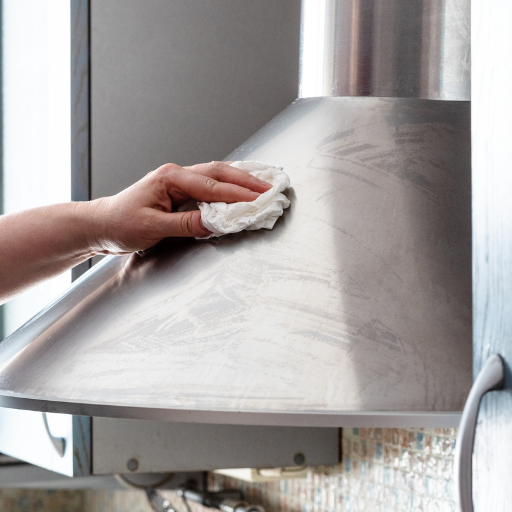
To maintain the pristine condition and longevity of your stainless steel cookware and flatware, follow these expert tips:
- Cleaning: After each use, wash your stainless steel items with warm water and mild detergent. Avoid using abrasive cleaners or steel wool, which can scratch the surface.
- Drying: Always dry your stainless steel pieces thoroughly with a soft cloth to prevent water spots and streaks.
- Removing Stains: For tougher stains, use a paste of baking soda and water or a specialized stainless steel cleaner. Gently scrub with a soft cloth or sponge.
- Avoiding High Heat: Excessive heat can cause discoloration. Use medium to low heat when cooking, and let the cookware cool down before cleaning.
- Handling: To avoid denting or scratching, handle your stainless steel items with care and store them properly, ensuring they are not stacked with heavier objects.
By adhering to these guidelines, you will preserve the appearance and functionality of your stainless steel pots, pans, and flatware for years to come.
Preventing rust and corrosion in stainless steel items
Combining the right ways of the use, cleaning and storage is important in preventing rust and corrosion in stainless steel things. The following are some major tips that will help you keep your stainless steel kitchenware looking good:
- Use High-Quality Stainless Steel: Make sure your items are made of high-quality stainless steel preferably 18/8 (304) or 18/10 stainless steel which have more chromium and nickel content hence more resistance to rusting and corrosion.
- Avoid Prolonged Exposure to Acids and Salt: Such substances as tomatoes, citrus fruits, salty substances can worsen corrosion. Cook these foods in other containers and store them accordingly.
- Proper Cleaning and Drying: Clean stainless steel immediately after use with mild soap and warm water. Then dry left over water using a soft cloth because when waters spots remain on top of it may lead to rusting.
- Regular Maintenance: Once in a while polish your stainless steel belongings with mixture of water and vinegar or non-abrasive material for maintaining its protective covering.
- Avoid Abrasive Tools: Do not apply any abrasive scrubbers including the use of wool because they can cause scratching thus making it prone for rusting.
- Temperature Control: Avoid rapid temperature changes. Quick heating up or cooling down would result into metal fatigue, therefore; causing increased susceptibility to rusting as well as corrosion.
- Storage Tips: Keep your stainless steel things at any ventilated place that should be dry. Place silicon gel packets inside storage locations so as to absorb extra humidity.
Effective cleaning methods for stainless steel cookware
To clean stainless steel cookware effectively, follow these methods derived:
- Use Warm Water and Mild Dish Soap: Fill your sink with warm water and a few drops of mild dish soap. Allow your stainless steel cookware to soak for a few minutes, then use a non-abrasive sponge or cloth to gently scrub away any food residue.
- Baking Soda Paste: For tougher stains or stuck-on food, make a paste using baking soda and a small amount of water. Apply the paste to the cookware and let it sit for 15-20 minutes, then scrub gently with a non-abrasive sponge.
- Vinegar and Water Solution: Boil a mixture of one part vinegar and two parts water in the stainless steel cookware. This helps to remove discolouration and tough stains. Let it cool completely before washing with mild dish soap and warm water, then rinse and dry thoroughly.
Maintenance tips for long-lasting stainless steel flatware
To ensure the longevity of your stainless steel flatware, follow these maintenance tips sourced:
- Avoid Harsh Detergents: Use mild dish soap and warm water to clean your flatware. Avoid using detergents with strong chemicals that can damage the surface.
- Dry Immediately: After washing, dry your flatware thoroughly with a soft cloth to prevent water spots and minimize the risk of corrosion.
- Polish Regularly: Use a stainless steel polish or a mixture of baking soda and water to keep your flatware shiny. Apply the polish lightly and buff with a soft cloth.
- Proper Storage: Store stainless steel flatware in a dry place. Use a lined drawer or a flatware chest to protect it from scratches and moisture.
By incorporating these simple maintenance practices, you can keep your stainless steel flatware looking new and functioning well for years to come.
The future of cookware and flatware: Trends in stainless steel products
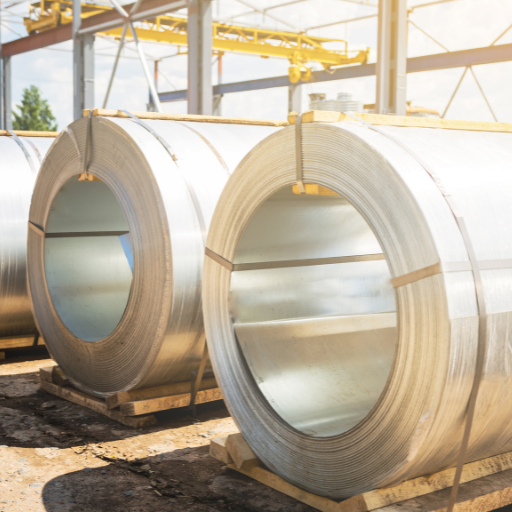
Innovations in stainless steel alloy composition
Cooking utensils and cutlery have become more durable and functional by reason of progress made in the composition of stainless steel alloys. In addition, advances in metallurgical engineering have seen the development of new types of stainless steels that have superior properties. For instance, the utilization of nitrogen as one of the components greatly enhances the strength and resistance to crevice corrosion and pitting. Moreover, duplex stainless steel with austenitic-ferritic structure combination provides improved toughness and high resistance to stress corrosion cracking.
Technical Parameters:
- Nitrogen-Enriched Alloys:
- Yield Strength: Increased by up to 50% compared to standard austenitic stainless steels.
- Corrosion Resistance: Enhanced resistance to pitting and crevice corrosion in chloride-rich environments.
- Duplex Stainless Steels:
- Tensile Strength: Typically around 600-750 MPa, higher than both austenitic and ferritic stainless steels.
- Corrosion Resistance: Exceptional resistance to stress corrosion cracking, making it ideal for harsh environments.
- Thermal Conductivity: Better thermal conductivity properties, improving heat distribution in cookware.
Emerging trends in stainless steel kitchenware design
- Sustainability and Eco-Friendly Designs:
With the increasing stress on environmental responsibility, manufacturers are switching to making sustainable stainless steel kitchenware. This involves the employment of recycled materials, as well as reducing environmental impacts of their production processes. Moreover, firms are seeking ways to enhance durability, thus promoting long life and reducing waste.
- Innovative Surface Finishes and Non-Stick Technologies:
Development in surface finish technologies like brushed or mirrored finishes results in both aesthetic appeal and functional advantages. Additionally, new non-stick coatings continue being created for improved functionality with no harmful chemicals contained by conventional nonstick surfaces. By combining ease of food release with easy cleaning while maintaining the health benefits of stainless steel,
- Smart Kitchenware Integration:
Reference sources
-
Made In Cookware – What Does 18/10 Stainless Steel Mean?
- Made In Cookware offers an informative guide on the meaning and significance of 18/10 stainless steel. It explains the alloy’s composition and why it is preferred for high-quality cookware and flatware.
- Source: Made In Cookware
-
Chemistry LibreTexts – Stainless Steel: Properties, Grades, and Applications
- Chemistry LibreTexts provides a comprehensive and technical overview of various grades of stainless steel, including 18/10. It details the chemical composition, properties, and specific applications in different industries.
- Source: Chemistry LibreTexts
-
AZoM – Characteristics of Stainless Steels: Grade 304 (18/10)
- AZoM (The A to Z of Materials) covers the characteristics of various stainless steel grades, with a focus on Grade 304, which corresponds to 18/10 stainless steel. This resource provides in-depth technical data and practical insights.
- Source: AZoM
Frequently Asked Questions (FAQs)
Q: What is 18/10 stainless steel?
A: 18/10 stainless steel contains 18% chromium and 10% nickel. This composition is considered high-quality stainless steel, as the chromium binds to the stainless steel surface and protects it from rust and corrosion, while the nickel adds hardness and strength. It’s commonly used in high-quality stainless steel flatware and cookware.
Q: Why choose 18/10 stainless steel for cutlery and flatware sets?
A: 18/10 stainless steel is ideal for cutlery and flatware sets because it combines durability with a high sheen finish. The higher nickel content provides a more rust-resistant and polishable surface, ensuring flatware, such as spoons and forks, maintains its appearance over time. It’s also more resistant to food acids and salts, making it perfect for daily use and special occasions.
Q: How is 18/10 stainless steel flatware set different from other types of stainless steel flatware?
A: The main difference between 18/10 stainless steel flatware sets and other types lies in the composition and quality. While 18/10 stainless steel contains 18% chromium and 10% nickel, other types, like 18/0 or 18/8, have different nickel contents, affecting their corrosion resistance, durability, and luster. 18/10 is considered the best quality for flatware due to its higher nickel content, offering better corrosion resistance and shine.
Q: Can 18/10 stainless steel be used for cooking utensils, like pans and pots?
A: Yes, 18/10 stainless steel is also used for cooking utensils, like pans and pots. Its corrosion resistance and ability to maintain a polished look make it a preferred choice for high-quality cookware. It is compatible with various cooking surfaces and can handle high heat, making it versatile for everyday cooking needs.
Q: How do I care for and maintain 18/10 stainless steel cutlery to ensure its longevity?
A: To care for and maintain 18/10 stainless steel cutlery, it is recommended to hand wash pieces with a mild detergent and dry them immediately to prevent water spots. Avoid using abrasive scrubbers which can scratch the surface. While many 18/10 stainless steel items are dishwasher safe, prolonged exposure to harsh dishwasher detergents can dull the finish over time. Polishing with a stainless steel cleaner occasionally can help maintain its shine.
Q: Is there a significant difference in quality between an 18/10 stainless steel flatware set for 4 and a service for 12?
A: The quality of the flatware itself does not depend on whether the set is for 4 or for 12; it depends on the manufacturing process and material composition. However, purchasing a larger set, like a service for 12, can ensure that all pieces match perfectly and often include additional serving pieces. Quality should remain consistent across sets, assuming they are from the same manufacturer and product line.
Q: Can 18/10 stainless steel flatware include specialized pieces, like serving spoons or dinner knives?
A: Yes, 18/10 stainless steel flatware sets often include a variety of specialized pieces beyond the basic fork, knife, and spoon. Sets can include serving spoons, dinner knives, salad forks, teaspoons, and even more specialized utensils like cake servers or steak knives. The inclusion of these pieces varies by the set and manufacturer, offering options for both simple and extensive flatware collections.
Q: What are the environmental benefits of using 18/10 stainless steel for cutlery and cookware?
A: 18/10 stainless steel is a durable, long-lasting material that can minimize waste by reducing the need for frequent replacements. It’s also 100% recyclable without degradation, which diminishes its environmental impact compared to disposable or less durable products. Choosing high-quality stainless steel items supports sustainability in the kitchen and dining room.








